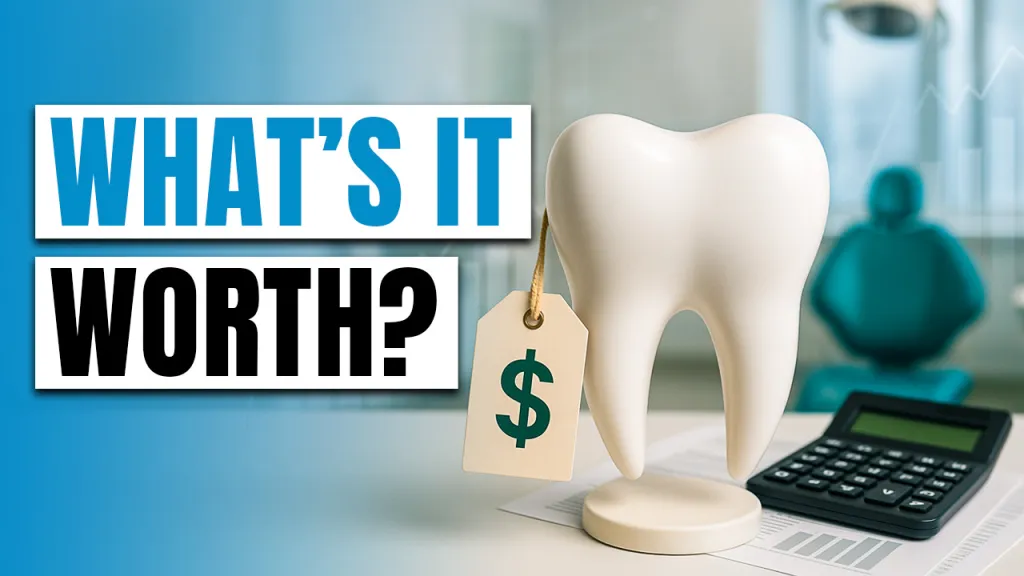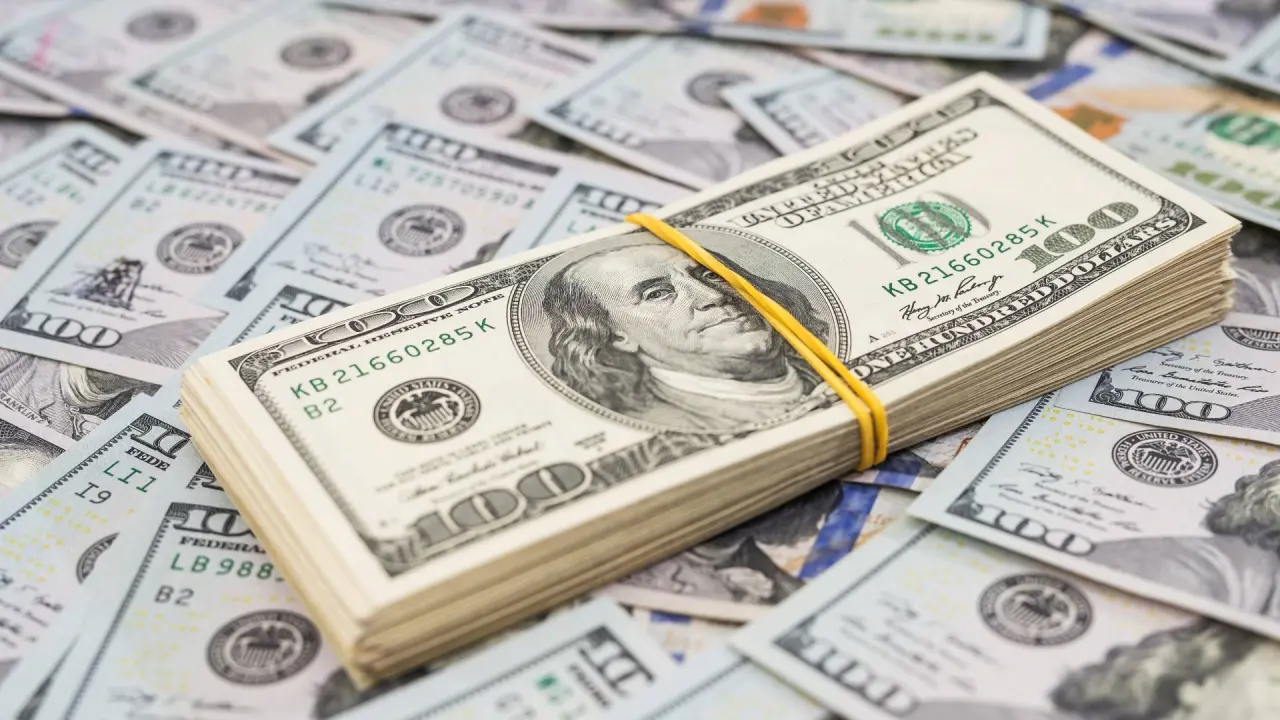
Author: Dr. Michael Karol, DDS | Dental Practice Transitions Specialist
It's difficult to determine how much a dental practice is worth, especially after you've spent many years turning a fledgling practice into a stable business. Once you decide to sell, however, it's important to get an accurate estimate of the practice's market value.
A detailed valuation can also help you determine if it's a good time to hire an additional dentist or invest in expanding the practice in some way. Before you make a major decision, read this guide to learn about what goes into determining an accurate valuation.
Preparing to Assign a Value

Before you determine the value of your practice, you'll need to gather financial statements, patient demographics, fee schedules, employee profiles and other documents. Financial statements are helpful for determining your gross annual revenue, average operating expenses and net income. Patient demographics are used to determine if the practice has the potential to grow based on your area's average age and income levels. Demographic reports also highlight potential opportunities associated with race, gender, ethnicity or family status.
Employee profiles can help you determine if your practice is worth more based on employee experience or specialization. In an episode of the podcast Beyond the Mouth, Betsy Shapiro of the American Dental Association interviewed Ginny Hegarty, a consultant specializing in practice leadership and employee engagement.
Hegarty explains that hiring the wrong employees creates drama, which eventually leads to increased turnover. If you have a team of experienced employees who work well together, your practice is likely worth more than a practice staffed by inexperienced workers who have difficulty collaborating. Your valuation may also be higher if you have employees with extensive experience or advanced degrees and certifications.
Factors Influencing Market Value

Average Practice Market Value
The average practice sells for 72% of its annual revenues. Most practices will sell for between 60% and 80% of annual revenues. Some may fall below and some could sell higher than those averages. What factors determine whether a practice will get a higher multiple or a lower multiple? Here are some of the variables that will influence the selling price:
Value of Equipment and Technology
Some practices have not been updated with new equipment and technology for 40 years — they have no computers, their patient files are all on paper and there is no way to create production reports or lists of patients. They are still using film and a Peri-Pro developer, and the dental units are antiquated. Other offices are completely digital and paperless. They have a Cone Beam, a Cerec machine, implant systems, Endo microscopes, a Millenium laser, Itero and Pan-Ceph.
Though these two practices can have the same Gross and Net revenues, their values will be different because of the value of the equipment and technology in place. Buyers are willing to pay more for a dental practice with up-to-date equipment in good condition.
Office Aesthetics

The value of your practice is also likely to be higher if your waiting room and treatment rooms are clean and visually appealing. If patients are sitting on scratched-up furniture or trying to avoid broken floor tiles on their way to the treatment area, your valuation won't be as high as it would be if everything was in good condition. Does the office have a real “wow factor” when you walk in, or does it leave you wanting to do a 180 and leave? Whether it’s one of these extremes or something in between, a practice’s aesthetic will certainly factor into its value.
Financial Considerations
Financial Trends
To get the highest valuation possible, you must be able to demonstrate a history of financial stability. Buyers like to see several years of financial statements to determine if the practice has been growing steadily or if you've had one or two good years mixed in with several years of losses. A practice where the revenues are increasing is much more valuable than a practice with declining revenues. “I used to do more,” “I am only open a limited amount of hours,” and “the buyer can increase the collections in no time” are phrases used by most sellers — but the reality is that the value is based on what is happening today, and a seller that does not want to accept the truth will never agree to sell at a price acceptable to them.
Work Referred Out
Some dentists are able to keep all specialty work in house, either by leveraging their own skills or by bringing in a specialist to see their patients. Some send everything but fillings, crowns and cleanings out to specialists. If the buyer can change it up and keep all the specialty work in house, there is room for tremendous practice growth even before getting new patients.
Fee Structure
How are the fees? Some practices do really well attracting a large volume of patients who pay low fees, while others are able to get large fees from their patients. Profit margins are bigger when it comes to higher-fee work, of course. While buyers should always choose the practice model best suited for them, higher fee practices generally sell for a higher percentage because you need to see fewer patients to generate the same money.
Practice Location, Visibility and New Patients
A practice’s location and visibility will factor into the sale price indirectly, as it will affect the gross and net revenues of the seller and show up mostly indirectly in the value of the practice. High visibility usually equates with higher rent. If all goes well, then gross revenues are higher due to the better location and visibility. But if the fees are low and revenues are low, then a high rent is a good reason to sell the practice to someone who will merge it in with their practice, as this practice can easily become unprofitable. A practice needs an influx of new patients in order to stay healthy and grow. The number of new patients seen every month will certainly factor into the equation for the value of a practice.
Cooperation of Current Doctors and Staff
Having a staff who will want to keep their jobs after the sale is an important factor. The patients interact with the staff constantly, and the feeling of comfort from familiar faces and voices will help in the transition of the practice. Having the seller cooperate with the buyer’s plans for the practice is a big factor, as well. If the seller is physically unable to cooperate, then the value of the practice will be diminished — unless the buyer really doesn't want their assistance.
Appraisal Approaches and Methodology

There are three fundamental approaches used in this report to measure the fair-market value of a practice:
- Discretionary Earnings Approach
- Gross Income Approach
- Gross Composite Approach
Each valuation method uses a specific procedure to calculate the practice value. No one practice valuation approach is definitive. Hence, it is common practice to use a number of valuation methods to give consideration to many types of practices. The final fair-market practice value is then determined by reconciling the results obtained from the selected methods. Typically, a weight is assigned to the result of each practice valuation method. Finally, the sum of the weighted results is used to determine the value of the subject practice.
Capitalization Rate
The Capitalization Rate (“Cap Rate”) is a metric which is used to indicate the rate of return that is expected to be generated on an investment. Being that purchasing a dental practice is a significant investment for most people, it is important to understand capitalization rate and how it can be used to calculate the value of a practice. Cap rate is the most popular measure through which investments are assessed for their profitability and return potential. The cap rate simply represents the yield of a property over one year’s time if that investment is bought with cash at market value. The basic formula for cap rate is as follows: Cap Rate = Net Income / Market Value.
Another way to think about cap rate is the average percentage of net income that the market is willing to spend above net income to purchase a property/investment. In certain markets, investors may be willing to spend 10 times the net income, knowing that they will make their money back after 10 years. In other markets, the cap rate may be much lower or higher.
In general, the best way to determine that cap rate in your market is to look at other comparable sales in the subject market to discover how much investors are willing to pay. In our business, we have seen many sales of dental practices in various facets and amounts of net income. We have compiled all these sales and determined that a reasonable average cap rate for this market is 50%. With a cap rate of 50%, we should expect that the average market value of any dental practice to be approximately two times the net income. For example, a practice with a net income of $250,000 and a cap rate of 50% would be likely to sell for $500,000 on the fair market.
Discretionary Earnings Approach
The Discretionary Earnings Approach is a type of income appraisal which uses seller’s discretionary earnings (SDE) as the primary measure of earnings for a practice. Essentially, this method establishes the practice value as a multiple of its earnings adjusted for practice valuation factor (PVF) and capitalization rate. Finally, the value of tangible assets is added to the value of the practice: Value= SDE∗PVF /Cap Rate +Tangible Assets.
To determine the practice value using this approach, we use the SDE as the basic measure of the business earnings power, estimated as a weighted average of the historic values obtained during the practice’s income statement reconstruction.
Gross Income Approach
The Gross Income Approach is a type of income appraisal similar to the Discretionary Earnings Approach but which instead uses gross income as the primary measure of earnings for the practice. Essentially, this method established the practice value as a multiple of its gross income adjusted for practice valuation factor and a scalar of 80% (so chosen because, in our experience of other sales, the market value of a practice is generally 80% of the goodwill). Finally, the value of tangible assets is added to the value of the practice: Value=(Gross Income∗PVF∗80%)+Tangible Assets.
To determine the practice value using this approach, we use the gross income as the basic measure of the business earnings power. We estimate the gross income as a weighted average of the historic values obtained during the practice’s income statement reconstruction.
Gross Composite Approach
The Gross Composite Approach is a type of income appraisal which only looks at the gross revenues of a practice and its practice valuation factor. This approach uses Gross Income as the primary measure of earnings for the practice. The formula for calculating practice value is simply a product of its Gross Income and the Practice Valuation Factor: Value=Gross Income∗PVF.
Earnings Basis Calculation To determine the practice value using this approach, we use the Gross Income as the basic measure of the business earnings power. We estimate the Gross Income as a weighted average of the historic values obtained during the practice’s income statement reconstruction.
Mistakes to Avoid

You may have spent years building your practice, but it's important to keep your emotions at bay when working to determine the fair market value of the business. You should also avoid trying to determine a valuation on your own. Many factors go into determining the value of a dental practice, and some of them aren't obvious to someone who doesn't have extensive experience making this type of estimate.
If you try to do it on your own, you could set the value way too low, leaving you with less money in your pocket after the sale. You could also overestimate the value of the practice, making it difficult to find a buyer. Working with a professional can help you get the best possible price for the dental practice you worked so hard to build.
Getting Help With Dental Practice Valuation

US Dental has experienced professionals on hand to help you with buying, selling or valuing your practice. Whether you're ready to retire after decades of practice or just venturing out on your own, our team can provide the guidance you need to make wise business decisions. Contact us at (800) 449-8641 to get help determining the fair market value of a practice.
